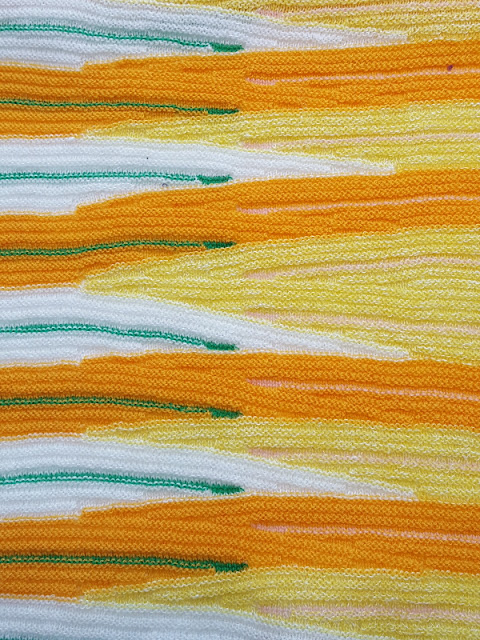Today I'm officially announcing that I'm no longer selling sweater knit yardage. At the same time I wish to express my gratitude for your continued interest in my products. While I had previously specialized in providing yardage for sewing enthusiasts, I have shifted my focus to teaching and providing custom knit fabrics and kits. I do enjoy the occasional special knitting project!
Interestingly, I recently received a letter from Rita, a former hand knitter, who expressed a keen interest in exploring alternative methods for creating sweaters, as she is no longer able to hand knit. Specifically, she inquired about finding suitable fabrics and resources for the cut and sew method. Her email and my announcement prompted me to write this brief post on sources of sweater knits. I hope you'll find it helpful.
Fabrics for Sweaters
If you're cutting and sewing your first sweater, I highly recommend checking thrift stores for old sweaters. Cutting and sewing an old sweater will help you build confidence when becoming comfortable with this unstable fabric. Also by repurposing old sweaters, you can save money and reduce waste.
If you're looking for new fabric or have something particular in mind, fashion fabric stores will usually have knits, but sometimes true sweater knits are difficult to find. Here are some online sources of sweater knits:
- Eagle Fabrics (US) — Made in Los Angeles. Beautiful, high quality classics currently in 100% cotton and blends.
- Mood fabrics (US) — Caution! I see some printed knits listed in this category. Be sure to request a swatch before purchasing.
- Emma OneSock (US) - A wide selection of natural, synthetic, and blends, the stock changes often. Find some gems here.
- Ditto Fabrics (UK) - Nice selection of wool blend sweater knits. Please note “washed wool” and “double layer” fabrics may behave more like standard knits or woven fabrics.
- Fabric Godmother (UK) - Search for “chunky knit” using the Search field (in upper right corner). I could be wrong, but a few woven fabrics pop up with the sweater knits.
Something Special
If you're looking for something that can't be found in the shops, I'm happy to chat with you about it. Perhaps it's something I can help you with.
And what about Rita? I'm happy to report Rita is a new enrollee in How to Cut and Sew a Sweater course with the e-book. Her sweater making adventures have begun once again. She was a very creative hand knitter. I know she'll create something special.
O!













